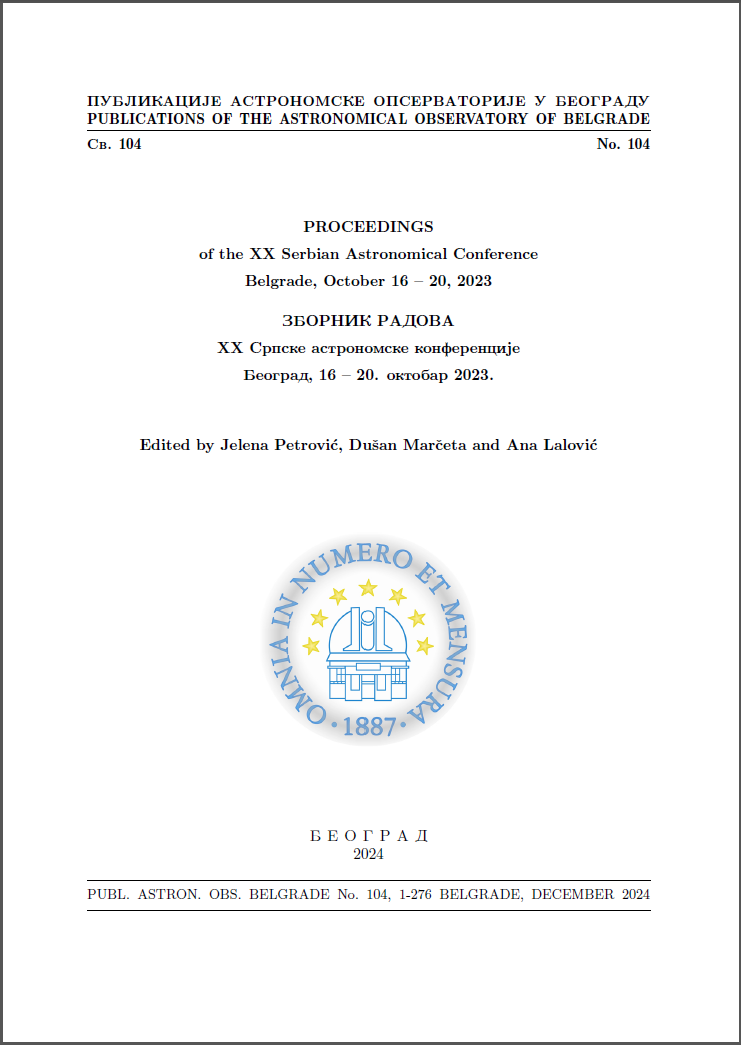SPECTRAL CHARACTERISTICS OF FAST ROTATING METAL-POOR MASSIVE STARS
Brankica Kubátová, Dorottya Szécsi.
Publication
PUBLICATIONS OF THE ASTRONOMICAL OBSERVATORY OF BELGRADE104, Page 99-104, https://doi.org/10.69646/aob104p099
PROCEEDINGS of the XX Serbian Astronomical Conference, Belgrade, October 16 - 20, 2023, Edited by Jelena Petrović, Dušan Marčeta and Ana Lalović
Published by: Astronomical Observatory, Volgina 7, 11060 Belgrade 38, Serbia
Published: 15. 12. 2024.
Abstract
Abstract. Low-metallicity massive stars are assumed to be progenitors of certain supernovae, gamma-ray bursts, and gravitational wave emitting mergers. These exotic phenomena contribute to their host galaxies through strong ionizing radiation and mechanical feedback. Here we investigate a certain type of very metal-poor (0.02 Z_{odot}) hot massive single stars that rotate fast and evolve chemically homogeneously. Combining state-of-the-art theories of stellar evolution and stellar atmospheres modelling we predict synthetic spectra of these stars corresponding to different masses and evolutionary phases. The predicted spectra in early evolutionary phases is classified mainly as an early-O type giant or supergiant while in later evolutionary phases most of our model spectra are assigned to the WO-type spectral class. The Hubble Space Telescope’s (HST) Ultraviolet Legacy Library of Young Stars as Essential Standards (ULLYSES) program will enable us to compare our predicted spectra with observations of stars of similar nature (e.g., metal-poor stars in Sextant A).




